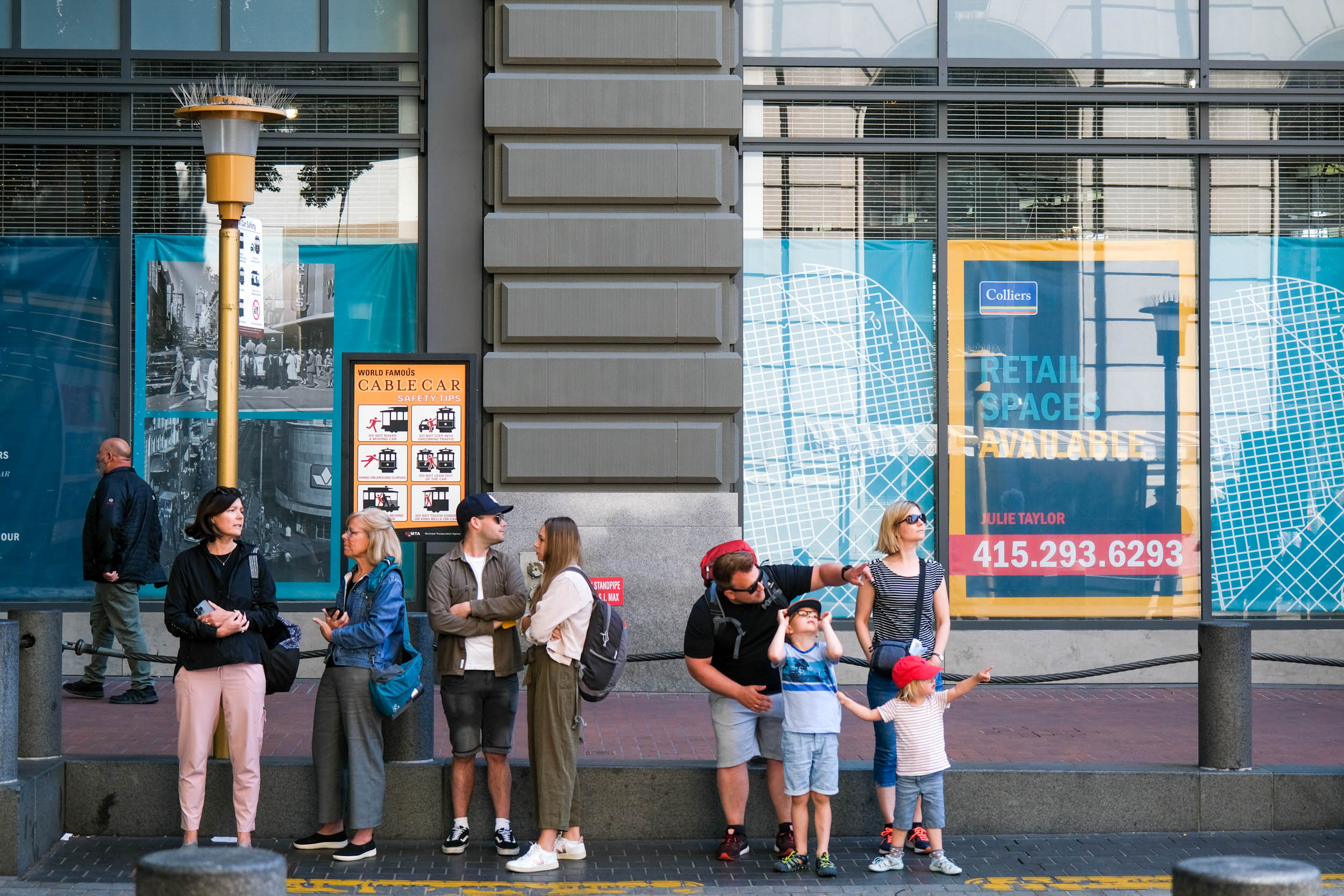The British are coming. San Francisco has welcomed 650% more tourists from the U.K. over the past year, an apparent sign of success for the city’s concerted effort to draw more international tourists.
The mood at the San Francisco Travel Association Annual Visitor & Lodgings Forecast forum was more optimistic compared to the dour early days of the pandemic. But a full recovery for the city’s lucrative tourism sector remains a distant prospect amid recession chatter, persistent labor shortages and ongoing travel restrictions in some parts of the world.
Besides the requisite jokes about masking and anecdotes about hearing more French and Italian at the city’s tourism hotspots, the forum gave a closer look at where things stand.
Things are starting to rebound, but are still a ways off from normal
SF’s tourism board, SF Travel, expects fewer visitors this year than it did in March, but believes they’ll spend more while they’re here. Currently, the tourism board projects that 21.9 million tourists will spend $6.7 billion in the city this year.
That’s because more domestic travelers are visiting San Francisco, along with a gradual increase in the heavier-spending international travelers: SF Travel projects 1.5 million international visitors to the city this year, a 163% year-over-year increase.
That’s still a far cry from 2019, the last normal year for tourism. A record 26.2 million tourists spent a total of $9.6 billion, boosting the city’s coffers and supporting thousands of jobs.
Good signs for international travel—at least from some corners
In the pre-pandemic days, international travelers made up less than a third of all overnight visitors, but were responsible for more than 60% of all spending. That’s the simple math around why the city is gunning hard to bring them back, even enlisting Mayor London Breed to court more European tourists earlier this year.
Compared to 2019, the volume of international visitors is down around 50% with some 3 million international travelers accounting for $3.1 billion in spending. But it’s a major improvement over last year, when just 481,000 international tourists came to the city.
China, which was previously San Francisco’s No. 1 overseas tourism market, has remained largely closed off. But that could be changing soon, according to Brett Allor, SFTravel’s senior director of market strategy and research, who said that Chinese party elections this fall are expected to coincide with a reopening of travel to and from the country.
Although travel from Asia remains low, visitors from Europe, Latin America and Oceania have ticked up considerably: San Francisco is welcoming 800% and 666% more tourists from Australia and the U.K., respectively.
SF Travel expects international tourism to gradually recover to 2.7 million visitors by 2025, which can’t come soon enough for hotels, restaurants and bars that rely on those travelers.
Hotel occupancy and revenue are rising, but recovery relies on convention travel
San Francisco hotels, which have witnessed a particularly sluggish recovery compared to peer cities, are starting to see their fortunes turn as well. But the return of conventions remains the key to a full recovery.
SF Travel forecasts hotel occupancy at 59% in 2022, a 67% increase compared to last year but still down close to 30% from 2019. Just 34 events are confirmed for Moscone Center this year, compared to 49 in 2019.
More hotel closures may be on the way. There are 237 hotels currently operating in the city, while four have permanently closed and 14 are temporarily closed. Based on market conditions, however, it’s unlikely that many in that latter group will be re-opened by the end of the year.
Recession Talk Casts a Pall
It’s no big secret that whispers of an impending recession are getting louder.
Eric Evjen, director of data analytics and Insights at Tourism Economics, said that he puts the chance of a recession next year at about 40%.
Those fears, combined with inflation, have led to a nationwide pullback in consumer spending.
Labor shortages are a continuing stumbling block. Accommodation and food service jobs dropped dramatically during the pandemic, and many of those workers left the industry permanently. Building back the workforce still poses a serious challenge to the bars, restaurants and hotels that make of the core of San Francisco’s tourism sector.
Those workers are also harder to retain: For every 100 employees a business has, at least 5 are expected to quit every month in the hospitality and leisure industry. The industry has about 22,000 unfilled positions currently.
Correction: An earlier version of this story contained an incorrect figure for the 2025 forecast in the chart describing SF annual revenue per available room.
